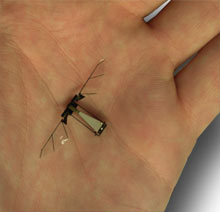


Last night I went to a lecture/signing by Dr. Francis Collins for his book, The Language of God: A Scientist Presents Evidence for Belief, at Olsson’s Books in Arlington, VA. Dr. Collins is the counterpoint to Dr. Richard Dawkins, (See my previous blog post) who recently wrote The God Delusion. While Dawkins is still an atheist, and Collins was once, Collins is now a Christian. Dr. Collins’ discussion about how he came to his belief in God, and how he reconciled this with his belief in science was very interesting. Dr. Collins was prompted by his work with patients (and their religious beliefs) to explore various faiths. He read up on Islam, Judaism, Budism, etc. and was most enticed by Christianity. While it may seem that Dr. Collins believes in “mere” Theistic Evolution, his pronouncement that he is a Christian (and believes that Jesus was also God) shows that he has more of a belief in a personal God (also evidenced by his statement that he prays).
Unlike Creationists (and those thinly-disguised Creationists, “Intelligent Design” fans), Dr. Collins has no problem reconciling his belief in God (and Jesus, and the Bible) with Science (specifically, Evolution). To paraphrase Dr. Collins: “It’s perfectly reasonable to believe that God created man by creating the Universe, and letting Man come into being via evolution. Yeah, it took billions of years to happen, but to God that’s an eyeblink.”
Dr. Collins did touch on the “anthropic principle”, which basically states that the fundamental physical constants of the universe are fined-tuned to exactly support life. Some theorists have proposed that this can be explained away by the concept of a “multiverse”, with an infinite number of parallel universes. If you have an infinite number of universes, then obviously at least *one* of them will result in physical constraints that support life as we know it. I did appreciate Dr. Collins comment that a belief in a “multiverse” (something that can never be proven or tested) is no different than a belief in a God that created our (anthropic) universe.
A question was asked of Dr. Collins: Does he believe in God because it is “useful” or because it is “true”; or rather which of these qualities is more important? Dr. Collins unequivocally stated that it must be “truth”. A belief in God merely because it is “comforting” to believe (and thus be part of a network of like-minded people) would not work for him; he must also believe that it is true.
Amen.
 A team at Harvard lead by Robert Wood has created a fly-like robot that really flies like, er, a fly. It only weighs 60 milligrams. It’s just a start, since it has no onboard power nor can it be controlled (it flies on a tether to keep it straight). But it does fly! Future uses for such flybots (besides the obvious espionage uses) include the ability to fly into areas to detect toxins, etc. Neat.
A team at Harvard lead by Robert Wood has created a fly-like robot that really flies like, er, a fly. It only weighs 60 milligrams. It’s just a start, since it has no onboard power nor can it be controlled (it flies on a tether to keep it straight). But it does fly! Future uses for such flybots (besides the obvious espionage uses) include the ability to fly into areas to detect toxins, etc. Neat.





